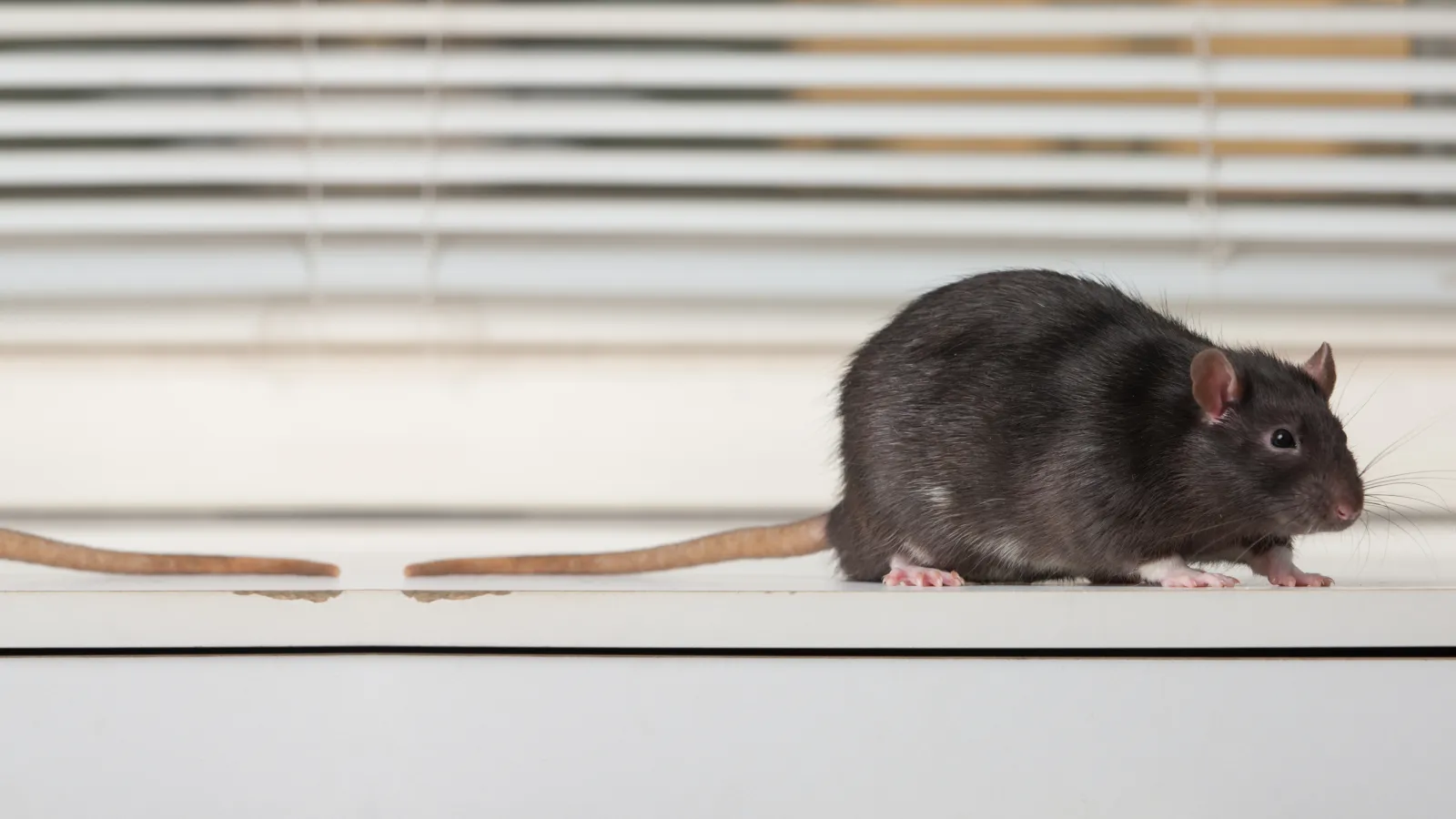
Roof Rats
Latin Name: Rattus Rattus
What is a Roof Rat?
The Roof Rat, also called the black rat or ship rat, is a common pest due to its tendency to settle in the upper part of homes. Roof rats are long, thin rats with large eyes and ears. They have long, scaly tails and smooth fur, typically brown with black spots. They typically grow to be 6 to 8 inches in size, not including their tails, which can be quite long for stability. A pest control expert can assist you in determining if you have roof rats in your home.
How to Prevent a Rat Infestation in Your Home
Roof rats are nesters and typically seek shelter in the upper parts of a home, like an attic or inside walls. Nests will be located in dark areas that are not likely to be disturbed. Common nesting materials include shredded paper, wall insulation, cotton, and packing materials. Clean up any debris and similar materials in and around your home to prevent these pests from nesting.
Roof rats forage for food and stockpile it in their nest. A telltale sign of a roof rat infestation is the presence of droppings. If the droppings are moist and soft, they are fresh, whereas they will be dry if they are older. These rats are nocturnal, so if they are heard during the day, the population is most likely large. Damaged electrical wires and other household goods are another sign, as well as teeth marks, noises in the walls, and greasy rub marks in the home.
Are Roof Rats Dangerous?
If you see signs of an infestation in your home, you should immediately contact a pest control professional. Roof rats can cause damage to your home by eating through electrical wires, furniture, and more. Not to mention, roof rats pose a significant health risk, as they can carry and transmit diseases to humans and pets, including leptospirosis, salmonellosis, rat-bite fever, murine typhus, plague, toxoplasmosis, and more.
How do I Handle a Rat Infestation?
If you suspect a rat roof infestation in your home, the first step is to contact your local pest control provider to remove them from your home. When dealing with mice and rat infestations, you will want to sanitize your home, eliminating anything that can be used as food or nesting materials, such as wood chip piles, landscaping scraps, unsealed garbage, or food not kept in containers with tight lids. Make sure to seal off any potential entry points larger than half an inch wide, focusing on openings like attic vents, gutters, and crawl spaces to prevent movement.
Similar Pests: House Mouse